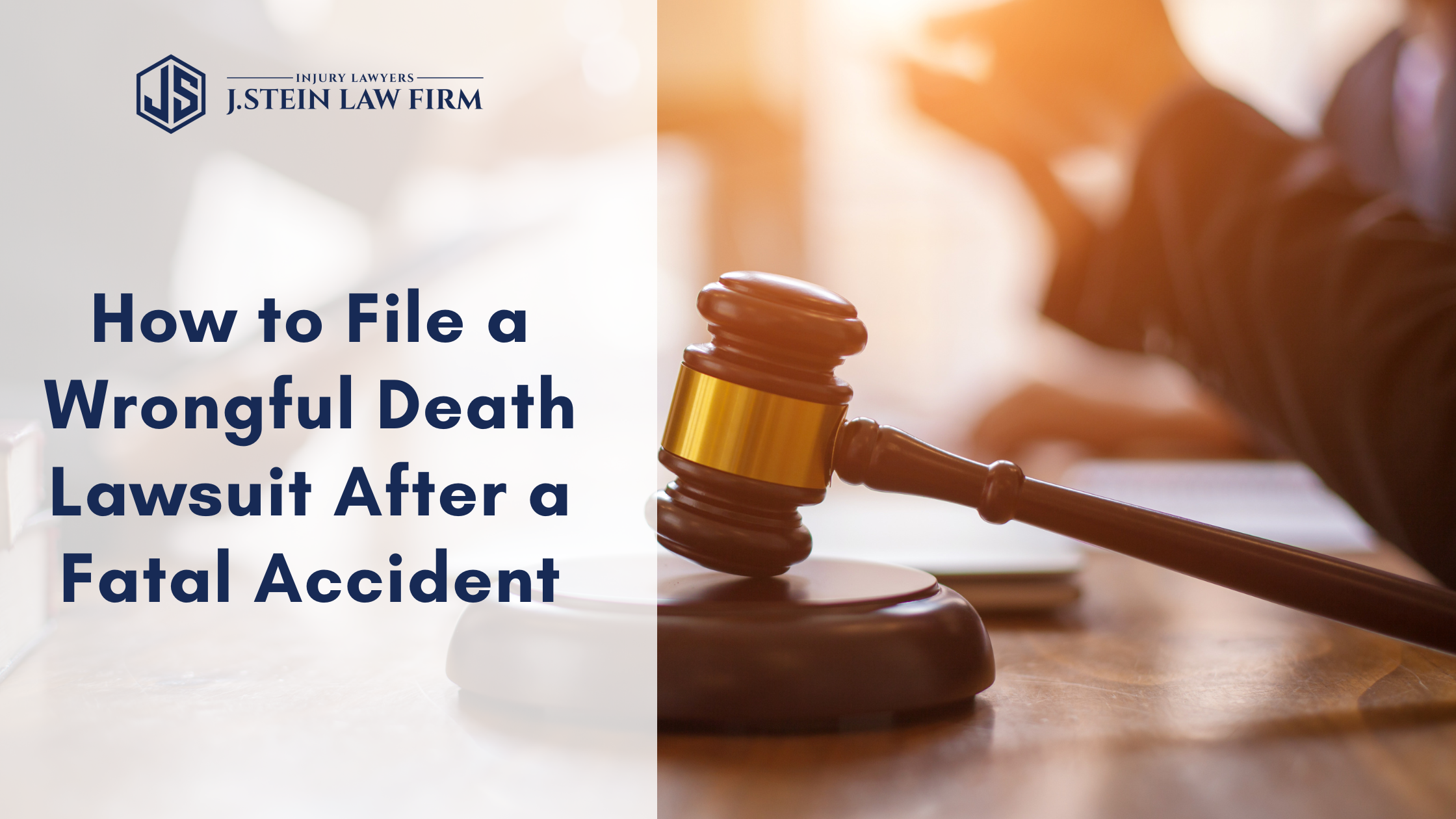How to File a Wrongful Death Lawsuit After a Fatal Accident
Losing a loved one in a fatal accident is a devastating experience that no family should have to experience. When the death occurs due to the negligence or misconduct of another party, pursuing a wrongful death lawsuit can provide a path to justice and financial relief. However, the process can be difficult, requiring an understanding of legal nuances and procedural requirements.
In this blog, we’ll walk you through the steps involved in filing a wrongful death lawsuit, highlight critical considerations, and explain how our expert lawyers can support you during this challenging time.
Understanding Wrongful Death Claims
A wrongful death lawsuit seeks compensation for the survivors of a deceased individual whose death resulted from another party’s negligence or wrongful act. Common scenarios include car accidents, medical malpractice, workplace incidents, and defective product cases.
Who Can File a Wrongful Death Lawsuit?
State laws vary, but typically, the following parties are eligible to file:
- Immediate family members: Spouses, children, or parents.
- Legal representatives: Executors or administrators of the deceased’s estate.
- Other dependents: In some states, extended family members or domestic partners may have the right to file.
What Damages Can Be Recovered?
Damages in wrongful death cases often fall into these categories:
- Economic damages: Funeral and burial expenses, medical bills, loss of income, and benefits.
- Non-economic damages: Emotional distress, loss of companionship, and pain and suffering.
- Punitive damages: In rare cases, courts may award these to punish the wrongdoer for egregious misconduct.
Steps to File a Wrongful Death Lawsuit
1. Determine Eligibility and Standing
Before filing, confirm that you are eligible to bring the lawsuit. Consulting a personal injury firm experienced in wrongful death cases such as J. Stein Law Firm ensures you understand your legal standing.
2. Gather Evidence
Compelling evidence is crucial to proving that negligence or intentional misconduct caused your loved one’s death. Key evidence may include:
- Police or accident reports.
- Witness statements.
- Medical records.
- Photographic or video documentation.
- Expert opinions (e.g., accident reconstruction or medical specialists).
3. Identify the Defendants
The responsible parties can range from individuals (e.g., a reckless driver) to organizations (e.g., a negligent employer or manufacturer). Determining liability requires careful investigation.
4. Establish the Elements of a Claim
To succeed in a wrongful death lawsuit, you must prove these key elements:
- Duty of care: The defendant owed the deceased a duty to act responsibly (e.g., a driver following traffic laws).
- Breach of duty: The defendant violated this duty.
- Causation: This breach directly caused the fatality.
- Damages: The death resulted in financial and emotional losses.
5. File the Lawsuit
Once your attorney drafts the lawsuit, it will be filed in the appropriate court. The defendant(s) will then have the opportunity to respond. This step marks the beginning of the litigation process.
6. Navigate the Discovery Phase
During discovery, both parties exchange information, documents, and evidence relevant to the case. Depositions may also take place, allowing attorneys to question witnesses and gather additional insights.
7. Attempt Settlement or Proceed to Trial
Most wrongful death cases are resolved through settlements, sparing families the emotional toll of a trial. However, if the parties cannot agree, the case proceeds to court, where a judge or jury determines the outcome.
Key Considerations in Wrongful Death Lawsuits
Time Limits: Statute of Limitations
Each state has a statute of limitations, typically ranging from one to three years, within which you must file a wrongful death lawsuit. Missing this deadline can forfeit your right to compensation.
Comparative Negligence
In some states, if the deceased shared fault for the accident, compensation may be reduced proportionally. An experienced lawyer can clarify how this rule applies in your jurisdiction.
Emotional Toll on the Family
Pursuing a lawsuit while grieving can be emotionally exhausting. A compassionate attorney can handle legal complexities, allowing you to focus on healing.
How J. Stein Law Firm Can Help
Hiring a skilled personal injury lawyer is essential to navigating the intricate process of filing a wrongful death lawsuit. Here’s how we can assist:
- Evaluate Your Case: We’ll review the circumstances to determine if a wrongful death claim is viable.
- Handle Investigations: We’ll conduct thorough investigations to collect evidence and build a strong case.
- Negotiate Settlements: We’ll negotiate with insurance companies or defendants to secure fair compensation.
- Represent You in Court: If necessary, we will present a compelling case at trial.
- Provide Emotional Support: We understand the sensitivities of wrongful death cases and offer empathetic guidance.
Conclusion
Filing a wrongful death lawsuit is a way to seek justice for your loved one while obtaining financial relief for your family. However, the process is legally and emotionally demanding. Partnering with an experienced personal injury lawyer like J. Stein Law Firm ensures that your case is handled professionally and compassionately, giving you the best chance of securing a favorable outcome.
If you’ve lost a loved one due to someone else’s negligence, don’t face this journey alone. Contact us today at 404-418-6379 to discuss your case and get the justice you deserve.


